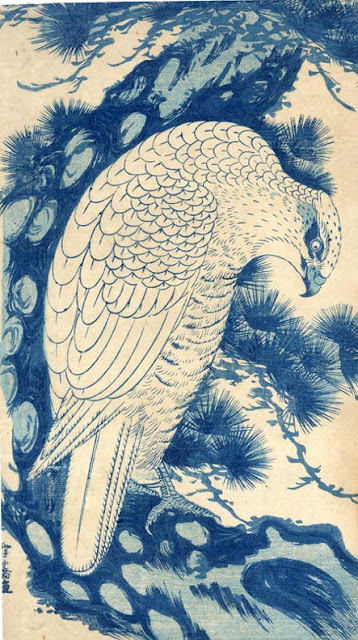 |
|
Shunsen:
Kingfisher on Bamboo
|
Here we have a kachô-e, Kingfisher on Bamboo. It is also an aizuri-e, that is to say that the only colour is blue.
Katsukawa Shunsen (1762 - about 1830) also called himself Shunkō II when he succeeded Shunkō I as the head of the Katsukawa school.


